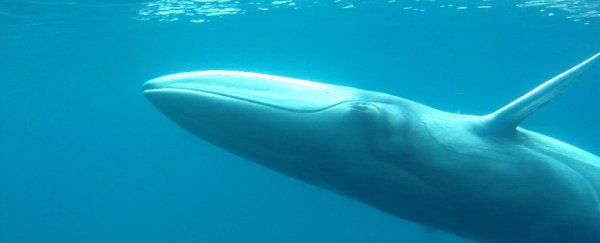Whales are among the biggest animals on the planet, so it's hard to imagine an entire species going undetected for years. But that's exactly what's been happening with the Omura whale since it was confirmed to exist in 2003.
Despite Japanese scientists using DNA from old whaling trips to identify the species 12 years ago, the Omura whale has never actually been documented in the wild… until now. The Business Insider video above contains the first footage that's ever been captured, showing an individual gliding and diving in the Indian Ocean off the coast of Madagascar.
Prior to this, there had only been two Omura whales confirmed to be sighted in the flesh, and both had washed up dead on beaches, most recently in April this year in Western Australia.
"Over the years, there have been a small handful of possible sightings of Omura's whales, but nothing that was confirmed," said Salvatore Cerchio from the New England Aquarium and the Woods Hole Oceanographic Institution, who led the team that spotted the whales. "They appear to occur in remote regions and are difficult to find at sea, because they are small and do not put up a prominent blow."
Omura whales are relatively small baleen whales, reaching only 10 to 11.5 metres (33 to 38 feet). Prior to 2003, they were assumed to be a dwarf version of Bryde's whales, and this is what Cherchio initially thought they were seeing when they spotted 25 individuals – including four calves – in the shallow coastal waters near Madagascar, as Omura whales had previously only been spotted in the west Pacific ocean, near Thailand and the Philippines.
But the whales had uneven colouring on their head, which is characteristic of Omura whales, and genetic testing of skin biopsies later confirmed the sighting.
The team will return to the same spot next year in the hopes of sighting the elusive species again, because there's still a whole lot we don't know about it – most importantly, how many individuals are left.
The first description of the animals in the wild has been published in the Royal Society Open Science journal.
